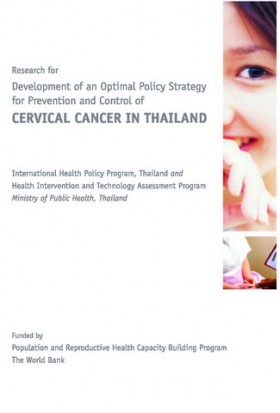Cervical cancer is a global public health problem, with approximately 500,000 new cases are identified each year globally. The disease is the most common cancer in women in the developing world and its mortality is very high–nearly 300,000 per year, 80% of which are in resource-poor settings. Human papillomavirus (HPV) has been proven as a major causative agent for the cancer. HPV infection generally occurs in the population between 16 and 20 years of age. Public health service package for the control of cervical cancer includes range of prevention, screening, treatment and palliative interventions. While there is no effective pharmacological approach to treat advance stage of cervical carcinoma, early detection of the abnormal cell growth by performing regular cytological screening, either Papanicolaou (Pap) smear or direct visual inspection (VIA), is recommended. HPV DNA method is a specific test for the viral infection. However, these methods vary for their sensitivity, specificity and costs, as well as indications and advantages when introduced as a component of national cervical cancer control initiatives. Until recently, the newly developed HPV vaccines appear to be a new hope for bringing cervical cancer under control. One of the vaccines was just approved by the U.S. Food and Drug Administration in June 2006 as a first prophylactic vaccine for preventing HPV infection. As HPV infection plays an important role in the development of cervical carcinoma, the success in HPV vaccine development has been claimed as a ground-breaking step forward in the fight against cancer of this type.







 Researh report: Development of an Optimal Policy Strategy for Prevention and Control of Cervical Cancer in Thailand
Researh report: Development of an Optimal Policy Strategy for Prevention and Control of Cervical Cancer in Thailand
